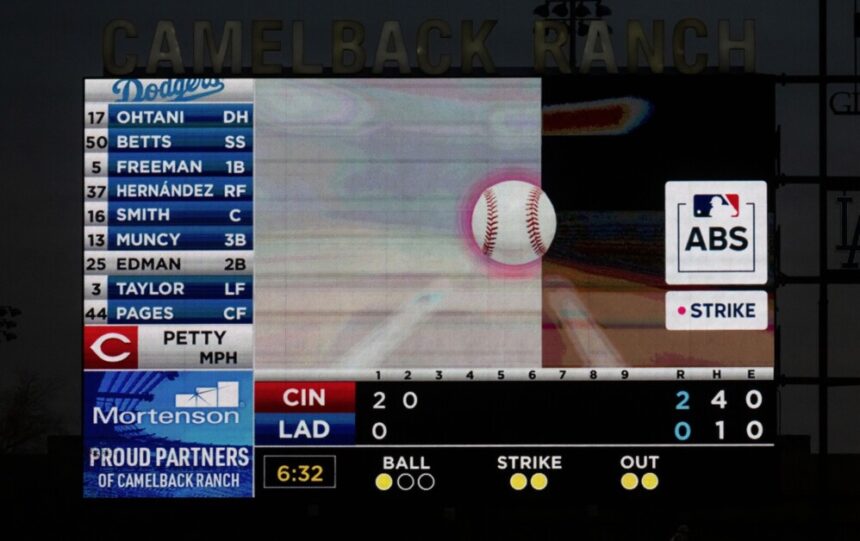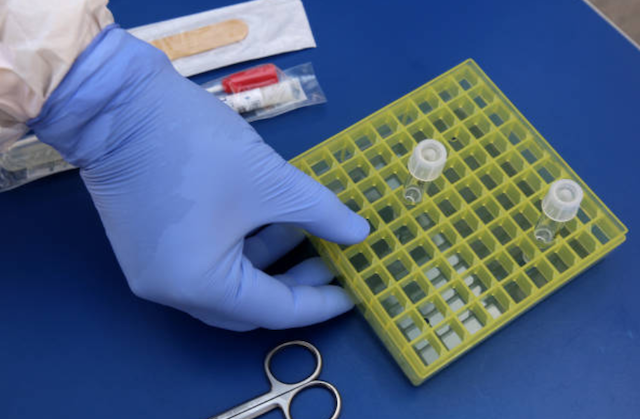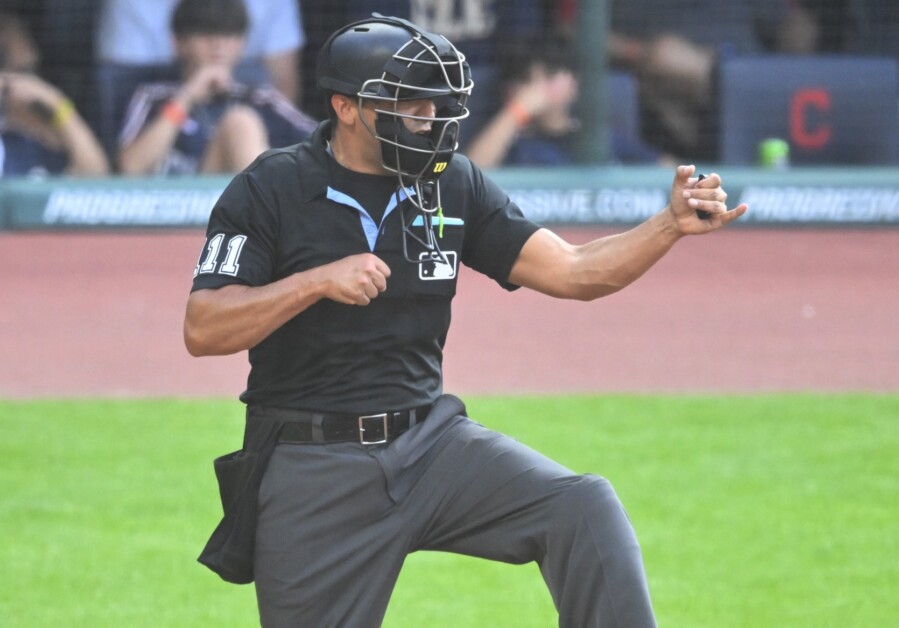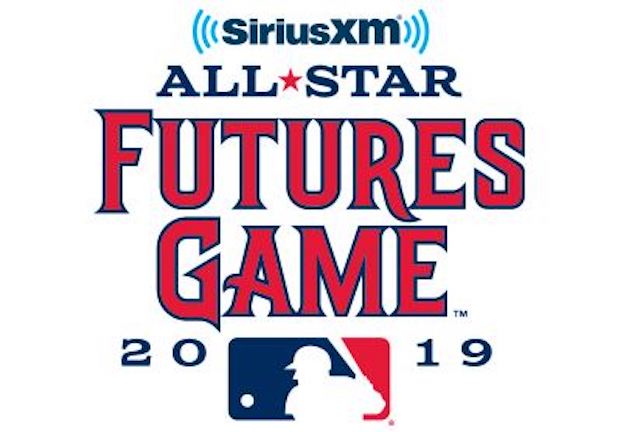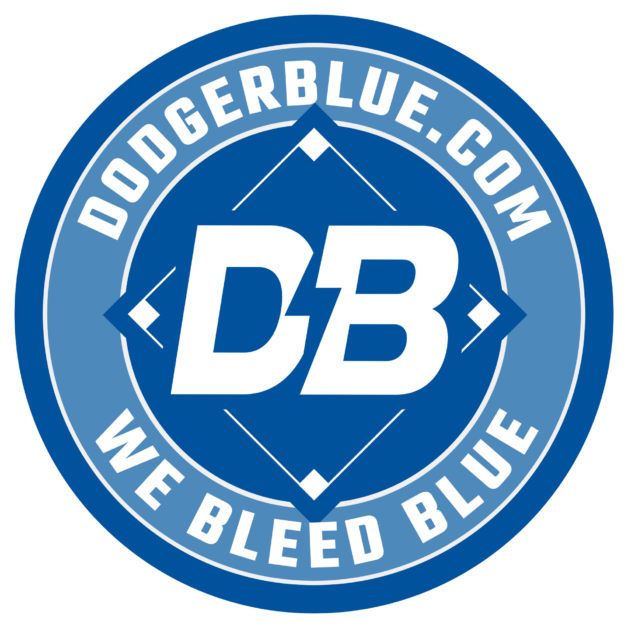MLB announced plans to implement the Automated Ball Strike (ABS) Challenge System on a full-time basis, beginning with the 2026 regular season. The rule change comes after a vote by the joint competition committee.
Though, like earlier this year, MLB’s challenge system is also going to be in effect for Spring Training games in 2026. It also is going to be in place for all postseason games, beginning next year.
Commissioner Rob Manfred has long been a proponent of the ABS System and after initially suggesting it would not be utilized in Major League games until the new collective bargaining agreement (CBA) is in place for the start of the 2027 season.
However, Manfred then reversed course and said a proposal would be submitted to MLB’s competition committee to implement the automated ball-strike system next season.
“The previous rule changes that have been adopted by the Joint Competition Committee have had staying power and created momentum for the game. We used the same process with ABS that started with listening to fans, conducting extensive testing at the minor league level, and trying at every step to make the game better,” Manfred said in a statement.
“Throughout this process we have worked on deploying the system in a way that’s acceptable to players. The strong preference from players for the Challenge format over using the technology to call every pitch was a key factor in determining the system we are announcing today.
I commend the Joint Competition Committee for striking the right balance of preserving the integral role of the umpire in the game with the ability to correct a missed call in a high-leverage situation, all while preserving the pace and rhythm of the game.
“I thank the Major League Umpires for their collaboration and the Major League Players for their feedback in moving the game forward for the fans.”
Forthcoming implementation of the ABS challenge system represents be the biggest change to the sport since multiple changes put in place at the start of the 2023 season. The pitch clock, larger bases and restrictions on shifts have all achieved the desired results of improving pace of play and increasing offense.
ABS Challenge System details
Is MLB now using robots?
Although there is going to be the use of technology, the Automated Ball Strike system is not a complete shift to proverbial “robot umps” as the home-plate umpire is still in place and responsible for calling balls and strikes on every pitch.
What the ABS Challenge System allows for is an opportunity to request an expedited review of those calls.
How MLB challenge system works
Pitches are tracked by 12 Hawk-Eye cameras set up around the perimeter of the field. If a pitcher, catcher or batter disagrees with the umpire’s initial call, a challenge can be requested by immediately tapping on his hat or helmet and vocalizing a challenge.
Only the batter, pitcher or catcher are allowed to call for a challenge. It must be requested immediately after the call, and help from the coaching staff, other players or anyone else is not permitted.
Upon review, if any part of the baseball touches any part of the strike zone, the pitch will be considered a strike. The home plate umpire will announce the challenge to the fans in the ballpark and a graphic showing the outcome of the challenge will be displayed on the scoreboard and broadcast.
The challenge system process takes approximately 15 seconds.
How many challenges do teams have?
Each team starts every game with two challenges for the ABS system. Only a successful challenge is retained, but in each extra inning, a team will be awarded a challenge if it has none remaining entering the inning.
If a team exhausts that challenge, they will still receive another in the ensuing inning should the game continue. If a team has challenges remaining at the start of the 10th inning, they will not get an additional one for that frame, though they will for any subsequent inning(s) if they are out of challenges at the start of it.
Strike zone for Challenge System
The ABS Challenge System sets the strike zone as a two-dimensional rectangle in the middle of home plate with the edges extending to the width of the plate (17 inches).
ABS adjusts the top and bottom of the strike zone to each individual player’s height (53.5% of the batter’s height at the top and 27% at the bottom). As was the process ahead of Spring Training in 2025, independent testers from a research institute using biomechanical analysis will measure players during spring camp to use a standardized process.
MLB will then certify each player’s official height before they can appear in any Major League game. Player heights are taken by having them stand straight up without cleats.
ABS strike zone compared to umpires
Not only is there a lack of a consistent strike zone amongst umpires, but it historically has leaned in favor of the pitchers. An umpire strike zone extends to a maximum of 55.6% at the top and minimum of 24.2% at the bottom.
How MLB decided on ABS System
A full ABS System (electronic strike zone/robot umpires) was first used in the Atlantic League in 2019. The ABS Challenge System then arrived in the Florida State League in 2022.
Both the full ABS and Challenge System were tested at the Triple-A level in 2023 and 2024 before a decision was made to move forward with the current format.
Have you subscribed to the Dodger Blue YouTube channel? Be sure to ring the notification bell to watch player interviews, participate in shows and giveaways, and stay up to date on all Dodgers news and rumors!



